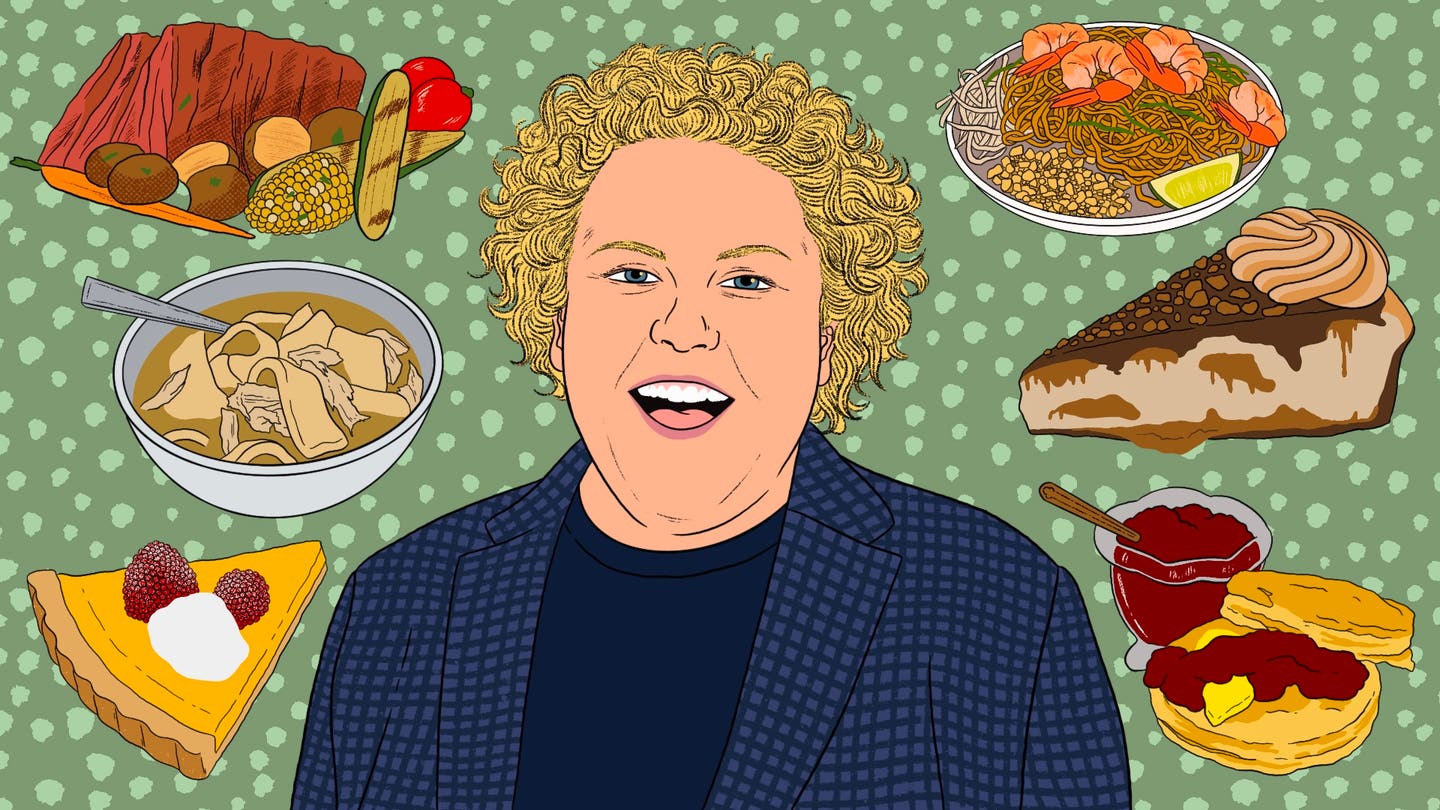
Egg Yoke
One theory as to the origins of the popular breakfast (and brunch) dish called eggs benedict—which usually consists of toasted english muffins, fried canadian bacon, and hollandaise sauce—credits its creation to a Manhattan financier named Lemuel Benedict, who is said to have requested "some buttered toast, crisp bacon, two poached eggs, and a hooker of Hollandaise sauce" from Oscar Tschirky, the legendary host-chef at the city's Waldorf Hotel, one morning in 1894 while nursing a hangover. Another story holds that Charles Ranhofer, chef at Delmonico's, invented it for a different New York businessman, LeGrand Benedict, around the same time. Unfortunately for Lemuel, and probably for LeGrand as well, Ranhofer included a recipe for "eggs à la Bened_ick_" in his 1893 vintage cookbook The Epicurean. Another prominent New York restaurateur of the period, George Rector, may have had the right idea when he noted, in his own recipe for the dish in A la Rector (1933), that "[a] Benedict…is a married man" (a newly married one who has long been a bachelor, according to the dictionary—the term borrowed from the character Benedick in Much Ado About Nothing). What does marriage have to do with eggs benedict? Again, Rector provides a clue. "Good Hollandaise Sauce…," he writes, "is undeniable proof that your husband has made a successful marriage."
There are innumerable variations on eggs benedict today. Bagels, rusk, sausage, chicken, crab cakes, guacamole, cheese, and pork gravy have all found their way into the dish. It has also become customary to sprinkle some chives, sliced black olives, or even black truffle shavings over the eggs. It’s a wonder Tschirky, Ranhofer, and Rector didn’t think of that last one.
Keep Reading
Continue to Next Story










